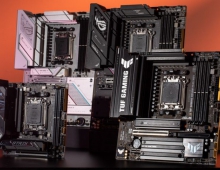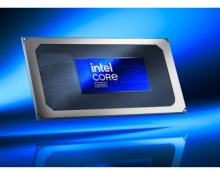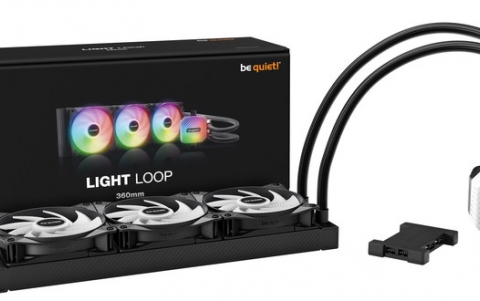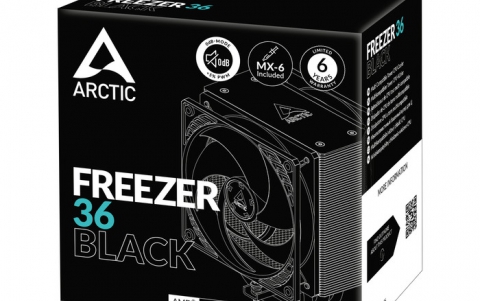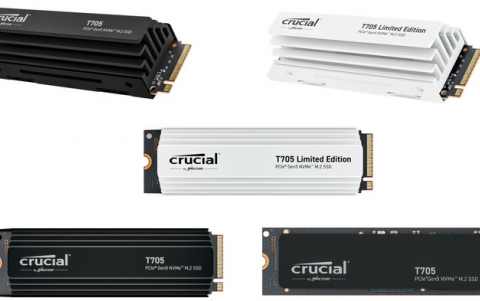
Intel CEO Unveils Curie Module For Wearable Solutions
Intel today announced a number of technology advancements and initiatives aimed at accelerating computing, including the Intel Curie module, a button-sized hardware product for wearable solutions; new applications for Intel RealSense cameras spanning robots, flying multi-copter drones and 3-D experiences. Intel also announced a new Diversity in Technology initiative, which includes a $300 million investment to encourage more diversity at Intel and within the technology industry at large.
"The rise of new personal computing experiences, intelligent and connected devices, and the wearable revolution are redefining the relationship between consumers and technology," said Brian Krzanich, Intel CEO. "Our goal with Intel technology is to help solve real problems and enable experiences that are truly desired by people and businesses. In order to do this, we must also do more to lead the growth of diversity and inclusion within the technology industry. Women and under-represented minorities will continue to play a greater role as consumers, influencers, creators and leaders."
Krzanich also unveiled a wearable device collaboration with sport performance eyewear brand Oakley, a 3-D collaboration with HP, and highlighted True Key, a new cross-platform application by Intel Security that uses personal factors like the face, device or fingerprint to make logging in easier and safer.
Intel Curie module
Krzanich disclosed plans for the Intel Curie module, a tiny hardware product based on the company's first purpose-built system-on-chip (SoC) for wearable devices - the Intel Quark SE SoC. The module is scheduled to ship in the second half of this year and includes the Intel Quark SE SoC, Bluetooth low-energy radio, sensors and battery charging.

The Intel Curie module is a complete low-power solution for the wearable space with compute, motion sensor, Bluetooth Low Energy and battery charging capabilities. The module runs on open source RTOS.
Intel Curie Module includes:
- Low-power, 32-bit Intel Quark microcontroller
- 384kB flash memory, 80kB SRAM
- Low-power, integrated DSP sensor hub with proprietary pattern matching accelerator
- Bluetooth Low Energy
- 6-axis combo sensor with accelerometer and gyroscope
- Battery charging circuitry (PMIC)
To speed the development of wearable products based on the Intel Curie module, Intel is providing a complete software solution that includes a small and efficient real-time operating system (RTOS) together with reference wearable applications called Intel IQ Software Kits. The kits include the embedded software that runs on the module together with companion smartphone applications and associated cloud capabilities.
Intel has been actively pursuing the wearable technology segment, and has already revealed several projects, in clooabortaion with Basis Peak, Fossil Group, Luxottica Group, MICA and Opening Ceremony, SMS Audio, and the Intel "Make it Wearable" challenge.
Intel and Oakley announced a strategic wearables collaboration. Oakley is the first Luxottica Group brand that Intel is working with to fuse luxury and sports eyewear with smart technology. Krzanich was joined on stage by Colin Baden, CEO of Oakley, who said the companies are working on an intelligent product, available later this year, designed to enhance athletes' performance.
Krzanich also highlighted Nixie, the 2014 "Make it Wearable" challenge winner and the first wearable camera that can fly. Nixie rests on your wrist like a bracelet, then unfolds and takes flight on cue to take the perfect shot of you in the moment. Krzanich welcomed Nixie founders Christoph Kohstall and Jelena Jovanovic to the stage to discuss the Intel "Make it Wearable" challenge and highlighted the opportunity it offers to innovators and entrepreneurs. Krzanich and the founders also posed for the first Nixie flying photo. Krzanich went on to say that Intel will sponsor the Intel "Make it Wearable" challenge again later this year.
Krzanich, who acknowledged a recent confluence of events related to women and under-represented minorities, announced the Diversity in Technology initiative.
To support this initiative, Intel has set a new hiring and retention goal to achieve full representation of women and under-represented minorities at Intel by 2020.
Intel also plans to invest $300 million to help build a pipeline of female and under-represented engineers and computer scientists; to actively support hiring and retaining more women and under-represented minorities; and to fund programs to support more positive representation within the technology and gaming industries.
"We're calling on our industry to again make the seemingly impossible possible by making a commitment to real change and clarity in our goals," said Krzanich. "Without a workforce that more closely mirrors the population, we are missing opportunities, including not understanding and designing for our own customers."
Intel plans to engage with several partners in the industry to support, enhance or create new programs for this initiative, including the International Game Developers Association, the E-Sports League, the National Center for Women in Technology, the CyberSmile Foundation, the Feminist Frequency, and Rainbow PUSH. The company also plans to deepen its engagement with primary education programs focused on underserved areas and expanding its collaborations with computer science and engineering programs at higher education institutions, including minority-serving institutions.
True Key
Up until now, computing has largely been defined by human interaction with a screen, keyboard and mouse. Krzanich highlighted several new technologies and real-world applications that will usher computing into a 3-D world and also free the experience from wires and passwords.
Krzanich demonstrated a range of capabilities that will be introduced in products by the end of the year, including True Key, a newly announced cross-platform application by Intel Security to address the hassle of passwords. The True Key application uses personal factors like the face, device or fingerprint to make logging in easier and safer. True Key is supported on iOS, Android, Windows, Mac, and across all your favorite browsers. It will also be preinstalled on devices from HP and Lenovo and a part of McAfee LiveSafe in the coming months.
True Key is an application that you can install on your phone, tablet or computer. As you navigate to your apps and web sites, True Key remembers your passwords and automatically fills them in for you when you return. Access to your True Key app is only available to you, once you prove you are you, things like your face or a trusted device you own. Your information syncs to all your devices.

Your data is locally encrypted with AES-256, one of the strongest grades of encryption available. Your passwords and wallet data are encrypted and decrypted locally, on your device. This encrypted data is stored on True Key servers. True Key will work with your device's front-facing camera and USB-connected cameras.
Every True Key account will have a Free Subscription that allows 15 passwords to be stored. If you have reached your storage limit, you can earn more space or upgrade to a Premium subscription for $19.99 (US) per year or $1.99 (US) per month.
Krzanich also highlighted new wireless charging collaborations including Hilton, Jaguar Land Rover, San Francisco International Airport and Marriott. These collaborators are planning wireless charging pilots, development and deployments including Marriott, which plans to pilot wireless charging capabilities across the Marriott portfolio of brands, including JW Marriott, Marriott, Renaissance, Courtyard and Residence Inn.
Intel's CEO said Intel RealSense cameras and new applications can be found in a growing number of 2 in 1s, tablets, notebooks and all-in-one PCs, including many powered by the new 5th generation Intel Core processors available this quarter.
Interfacing with Intel RealSense technology, the Software Development Kit (SDK) enables a new world of modalities for developers to bring computer/human interactions to the marketplace, and provides a new way to interact with Intel processor-based devices.
Intel and Food Network have collaborated to create a cooking application that uses Intel RealSense technology to eliminate the need to touch the device and instead use gesture control and voice commands on an Intel RealSense 3D camera enabled device for easy scrolling through the application and navigation of recipes in real time. This will be available in the Spring of 2015.
 Intel showcased a futuristic "3D I/O" technology that integrates Intel RealSense technology with a specialized glass screen to enable a hologram-like experience without the need for additional eyewear.
Intel showcased a futuristic "3D I/O" technology that integrates Intel RealSense technology with a specialized glass screen to enable a hologram-like experience without the need for additional eyewear.
Looking into the future, Krzanich also demonstrated a wearable technology research project that can help vision-impaired people navigate their environments more easily and safely. The wearable solution places sensors on clothing, equipped with Intel RealSense 3D cameras that sense the vicinity and trigger vibrations as a feedback mechanism, helping people to navigate their environment.
Intel demonstrated an iRobot AVA 500 video collaboration robot equipped with Intel RealSense cameras to support the platform's autonomous navigation and obstacle avoidance technologies. In addition, Intel highlighted the growing possibilities for multi-copter drones, including the inspection of fields and power lines, delivering goods, and even monitoring endangered species. During the CES keynote, Intel created a make-shift obstacle course inside the CES keynote ballroom and demonstrated a number of AscTec Firefly multi-copter drones equipped with Intel RealSense cameras that provide 360-degree sensing and enabled with unique collision avoidance capabilities.
Intel RealSense Snapshot is a solution that takes photography to another dimension with multi-camera, depth-enabled Intel Atom processor-based tablets. Capturing a high-definition depth map optimized for photography along with your full-resolution image, you can change focus and take measurements with a touch of a finger, add dynamic effects and motion.
The Intel RealSense 3D camera enables new ways to interact in gaming, entertainment, collaboration, and content creation. Featuring full 1080p color and a depth sensor, the integrated 3D camera delivers real-time depth sensing for all-in-one PCs, laptops, and 2 in 1s that is so precise it enables truly natural and immersive interaction.
The Intel RealSense 3D camera for tablets and detachables is an integrated 3D camera that delivers real-time depth sensing for rear-facing devices. It senses the surrounding world to scan, interact, play games, augment reality, and enhance photo and real-time video in three dimensions. With a longer range than our front-facing camera and designed for indoor and outdoor use, this camera measures just 3.8 mm thin, 100 mm long, and 8 mm high. It enables a host of new usages and interactions and supports both Windows and Android operating systems on Intel Atom processor- and Intel Core processor-based devices.
In addition, major brands like Lego, Disney Consumer Products, DreamWorks, 3D Systems, Autodesk, and Scholastic are developing applications supporting Intel RealSense technology.
Krzanich also welcomed Dion Weisler, executive vice president of HP's printer and personal system's business. Weisler discussed how HP is working to enable a blended reality ecosystem and announced that the Intel Core i7 processor will power the company's forthcoming HP Multi Jet Fusion technology, engineered to resolve critical gaps in speed, quality and cost. Weisler said the added performance and scale of Intel's technology is critical to realize the full potential of 3-D printing.

